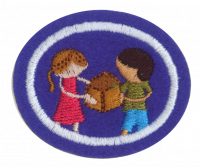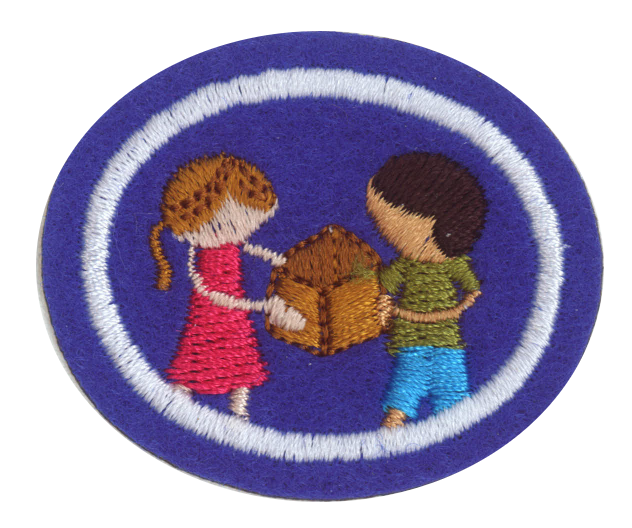Difference between revisions of "AY Honors/Serving Communities/Answer Key/en"
(Updating to match new version of source page) |
(Updating to match new version of source page) |
||
| Line 58: | Line 58: | ||
<noinclude></noinclude> | <noinclude></noinclude> | ||
<!-- 4. What do the letters ADRA stand for? Give a brief explanation of each word represented, and explain the difference between “development” and “relief”. --> | <!-- 4. What do the letters ADRA stand for? Give a brief explanation of each word represented, and explain the difference between “development” and “relief”. --> | ||
| − | {{: | + | {{:AY Honors/Serving Communities/ADRA}}. |
<noinclude></noinclude> | <noinclude></noinclude> | ||
| Line 118: | Line 118: | ||
<!-- 8. Plan a community service project with your Pathfinder unit or class and complete it. --> | <!-- 8. Plan a community service project with your Pathfinder unit or class and complete it. --> | ||
| − | It is a good idea to complete the [[ | + | It is a good idea to complete the [[AY Honors/Community Assessment|Community Assessment]] or [[AY Honors/Identifying Community Needs|Identifying Community Needs]] honor first and then use the information you compile as a foundation for planning this project and others. |
<noinclude></noinclude> | <noinclude></noinclude> | ||
Latest revision as of 14:08, 22 July 2022
Skill Level
1
Year
2009
Version
07.12.2025
Approval authority
North American Division
1
Christ told this parable in response to the question, "Who is my neighbor?" This question came at the end of a dialog with an educated, dedicated believer about God's law in which Christ quoted Leviticus 19:18, "Love your neighbor as yourself." This concept of unselfish love for neighbors is at the heart of God's expectations for humanity and foundational for community service of any kind. In the parable, Christ points out that religious people--the Levite who was a lay leader and the Priest who was clergy--sometimes see needy people but pass by without doing anything that is helpful. While other people--who may not be acceptable to the religious people at all; the Samaritan--respond immediately with the kind of practical, compassionate and unselfish help that is needed. The real neighbor, Jesus says, is the person who shows mercy in concrete ways, and commands His followers, "Go and do likewise." This story is particularly important because Jesus choose to make the exemplary individual, the Good Samaritan, a member of an ethnic group that was despised, looked down upon and discriminated against by the religious community to which Jesus belonged. He is pointing out that following Jesus is about the content of your character, not your race, culture or gender.
This parable is the last in a series of four parables that Jesus told in Matthew 24-25 in response to questions from His disciples about end time events; "When will this happen, and what will be the sign of your coming and of the end of the age?" (Matthew 24:3, NIV) In the previous parables Christ taught that His followers should not begin to attack and blame each other if they become weary in waiting for Him (Matthew 24:45-51); instead they should make sure they have the spiritual resources for long-term discipleship (Matthew 25:1-13) and invest their abilities in the marketplace and lead constructive lives instead of withdrawing from society (Matthew 25:14-30). In this capstone parable of the series, Jesus says that when God sits in judgment at the end of history, His concern will be primarily about how people treated the hungry, the poor, the alien, the homeless, the sick and the prisoner. In other words, the true mark of people who are really looking forward to the return of Christ is that they will be active in working against world hunger, to assure clean supplies of drinking water, to extend hospitality to aliens and refugees, to help the poor, to prevent and care for the victims of disease, and to stand up for the oppressed and imprisoned. It is interesting that when Jesus identifies Himself with the poor, the hurting and the oppressed, both groups in the story have essentially the same response. The righteous say, "When did we see you" among the poor (Matthew 25:38), unaware that their compassionate behavior had any particular religious meaning. In other words, they were not doing good works in order to be saved. And the unrighteous also say, "When did we see you" among the needy (Matthew 25:44), blind to the fact that their self-centered faith which did not see the need to become involved in dealing with hunger, poverty, disease or social injustice was unfaithful to Christ Himself.
2
3
3a
Adventist Community Services is usually what the church calls it community service efforts, but you should find out what name is used in your area. Older people in the church still may refer to Adventist Community Services (ACS) as Dorcas, but that name began to be phased out in the 1960s. There are still a few local churches that have a Dorcas Society and it is one of the several ministries under the official NAD Department called Adventist Community Services. Dorcas is named for a woman in the book of Acts who had spent her life serving the poor and was raised from the dead by the apostle Peter. There may also be a group known as Adventist Youth Emergency Service Corp in your area. This program sponsored by ACS and NAD Youth Ministry is for teens and young adults to participate in both ACS Disaster Response and local community services.
Local ACS normally provides clothing (new and used), food, and support to local individuals and families in need. They keep records of those assisted and offer referrals to other organizations when needs are outside of the common skill available at ACS.
3b
Outside the NAD, humanitarian services are provided by ADRA - Adventist Development and Relief Agency.
ADRA's work falls into six categories.
- Protecting the vulnerable
- Supporting families
- Promoting health
- Providing food and water
- Establishing livelihoods
- Responding to emergencies
4
- Adventist: A self managing agency of the General Conference of Seventh-day Adventists.
- Development: This effort is focused on developing economic and social stability through resources and training.
and
- Relief: The humanitarian effort to relieve the suffering of those who cannot help themselves
- Agency: ADRA is a Non-governmental agency on the U.N. NGO list operating in 120 nations world wide. [1]
Relief refers to efforts to address short term (though urgent) problems. Development is generally more of a long-term effort. Development projects include building and water projects. Some mistakenly believe that the D stands for Disaster, but while ADRA does respond to disasters, most of ADRA's programing is aimed at long term development projects designed to help populations improve their lives over the long term. .
5
5a
The point of a personal hygene kit is to allow people to clean up and feel better after a disaster (fire, natural disaster) or when stranded (closed airport for example). Being clean helps people stay calm and civil to each other. Different organizations have different kits based on the specific needs and culture of the area the kits will be distributed and budget, but in general personal hygene kits will include:
- Soap
- Washcloth
- toothbrush and toothpaste
- razor
- q tips
- band aid strip
- deodorant
- a bag to hold the kit
5b
6
See list above. Why not make a few kits, or get together a group or the whole club and make kits together. As a minimum, each person participating should make a complete kit so 10 people should make at least 10 kits.
7
7a
7b
Either way, the point of this requirement is to have a dialog between the people earning the honor and someone who is on the front line of Adventist Community Services or ADRA. Enjoy.
8
It is a good idea to complete the Community Assessment or Identifying Community Needs honor first and then use the information you compile as a foundation for planning this project and others.
9
This time includes planning, preparation, and execution of a project and any time spent working with ACS or other outreach ministry in your church. The typical Pathfinder Club will spend at least these hours in a normal year performing Community Services so this requirement should be easy for active members.


